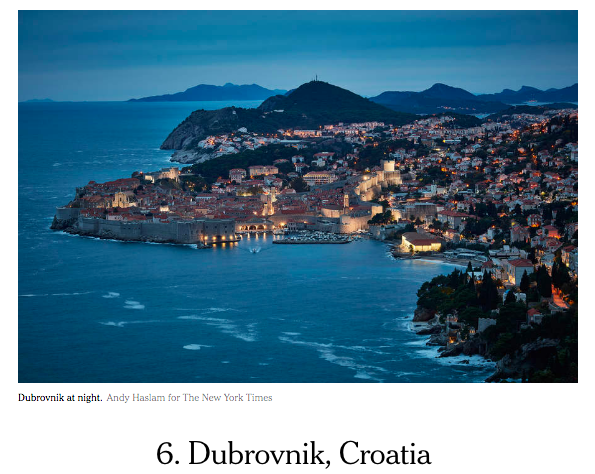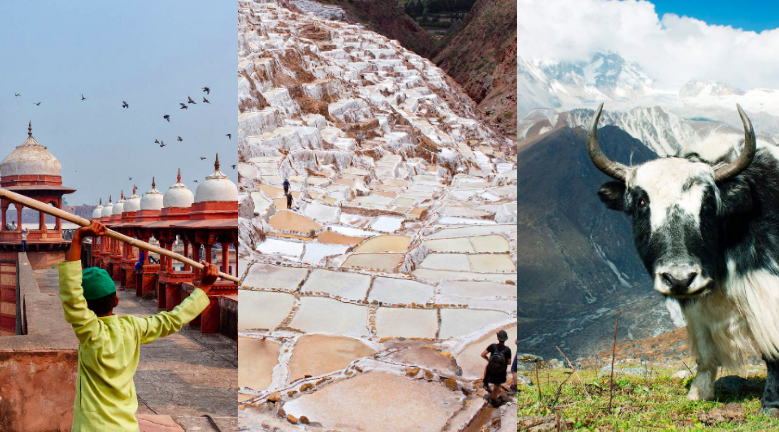How The New York Times reported its “52 Places to Go” travel section
If you could travel to 52 places, where would you go? Josh Williams, a multimedia and graphics editor for The New York Times, has a few dozen ideas.
Williams was a part of a team of nine producers who created a list of 52 places to visit in 2017. Williams spoke to Storybench about how the piece was produced.
How was this project envisioned?
Every year, the travel section presents its annual 52 Places to Go issue. I started working with the team in 2012 and here we are in 2018 and I am so lucky to be a part of this team.
What did you want users to get a sense of or feel?
We know that Americans love to travel. Americans love to explore and experience new things. So, we wanted our readers to feel inspired and want to visit these places when they have a chance. Also, we know that there are a lot of our readers who, for whatever reason, are unable to travel. Some are afraid of heights, others of airplanes, others don’t have the time or money. So, there are many obstacles that present themselves and through our issue we want our readers to be able to experience, at least through pictures and videos, what these 52 places to visit have to offer. And a lot of these places are in America, so if you live in that state you can see what we’re writing about.

What were some of the challenges to this story?
When you’re working on a big project like this one, there are many people involved. Some producers have other things going on in addition to contributing to the issue. So that calls for really long meetings and getting our ideas together. It’s really neat to see how it all comes together.
What is the process of this story? How did you all decide to choose the 52 places?
The process isn’t too bad. I’m kidding. It’s a long meeting where we discuss each idea. We ask our contributors, many who live overseas or are around the world searching for ideas. We get a lot of suggestions then we start narrowing our options. And what we look for is proximity. Why now? Why is this the year to go to that place? We look for a geographic and thematic diversity. We look for a mixture of destinations that are in demand and some who are not heard of.
What equipment was used?
If you noticed the photo credit in our issue, you’ll see that we get pictures from our contributors and they are in charge of getting us those images or interactive 360 images. Some contributors have DSLRs and others use GoPro, which is a good tool for 360.
So you have all these great images and 360, how is it that you put that into the issue? Are there specific technical skills?
Yes. So I’m a former LAMP developer, which is an archetypal model of web service stacks. LAMP is an acronym of the four open source components: the GNU/Linux operating system, the Apache HTTP Server, the MySQL relational database management system (RDBMS), and the PHP programming language. I know it’s a lot, but now I’m mostly a front-end designer and developer. The technical skills are essential, not many newsrooms, or journalists have the capacity to get involved with the technical aspects. Most people would be able to say they’re fluent in a second language.
Learning these technical skills is like learning another language. I’m fluent in JavaScript, HTML, and CSS. I would like to say I’m proficient in NODE, PHP, MySQL, Ellington CMS, WordPress development, Git, Subversion, BASYH, FFmpeg, ImageMagick, Linux administration, Amazon Web Services and many other multimedia authorizing tools. I know to you that may sound like Chinese. See what I mean? You may be fluent in English and Spanish and to me Spanish is out of my dimension, but for me these technical skills is equivalent to a language – that I think journalism schools should start teaching their students.
What advice do you have for any future journalists?
Journalists play a major role in our society. They hold people in government accountable. They tell other people’s stories, and they report news. All that is essential to our democracy. There are many mediums that someone can choose if they aspire to become a journalist. You have radio, television, print, photography, digital, online, there are so many platforms. Which is all great, but we’re in 2018 and the time is only going forward from here. Like the time is advancing so is the technology. So is the way people get their news.
I would advise journalists and journalism schools to stress their students to learn these technical skills. Of course not all of them, but some or one. You’ll become a better journalist because you will have more than one way to present your story. And within that story you can have your audience interact with certain photos and make them feel a part of that story; make them feel like they’re in the story. The future is looking bright for journalists, especially with the all the tools and technical advancements that are available to them. Times are changing and people are not receiving their news like they used to.
- How The New York Times reported its “52 Places to Go” travel section - October 14, 2018





